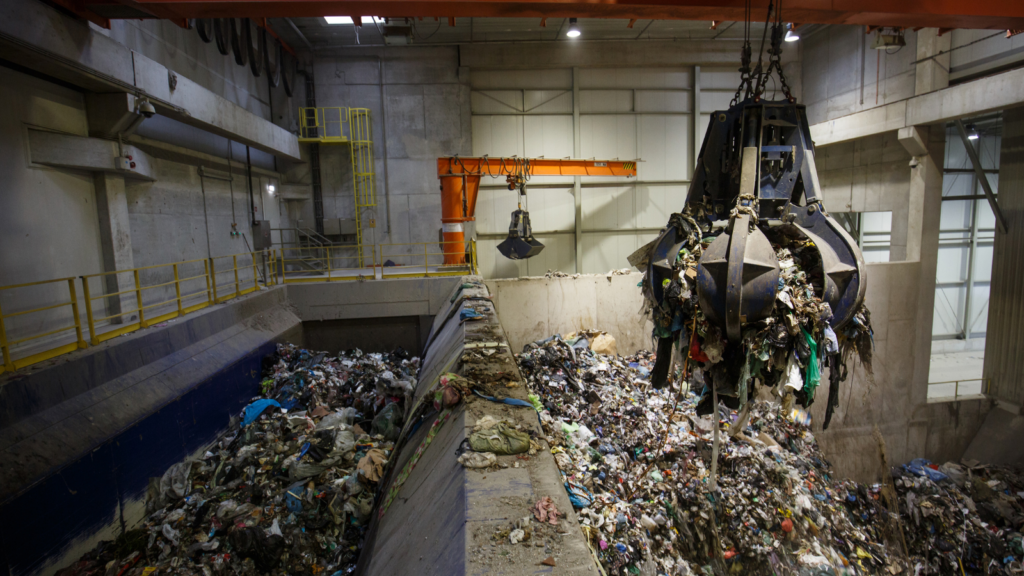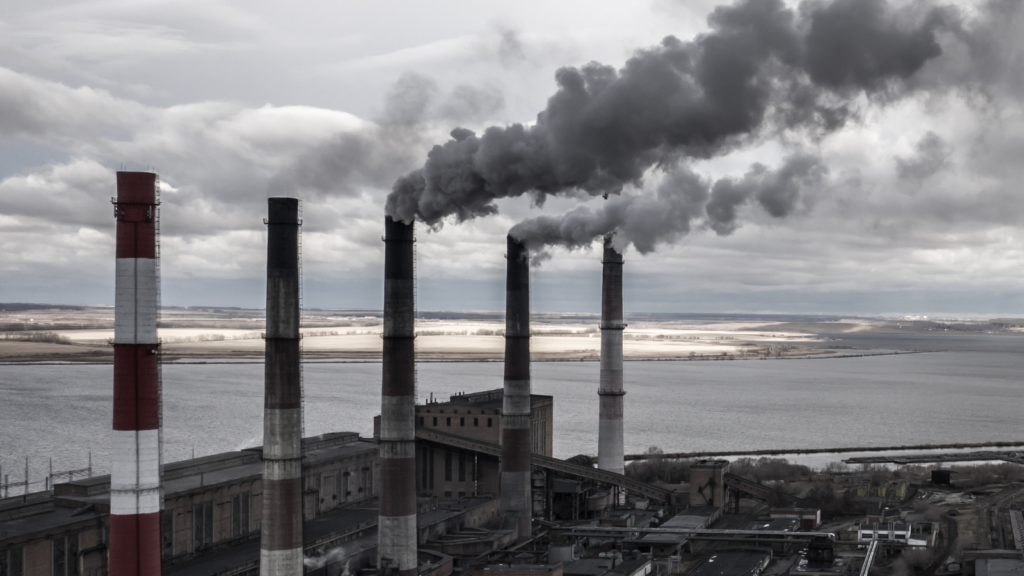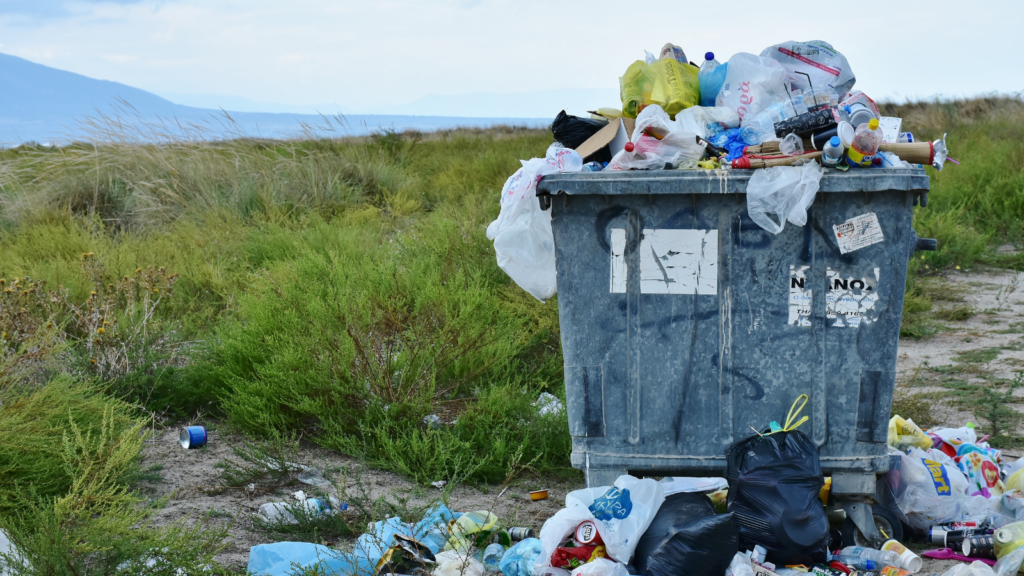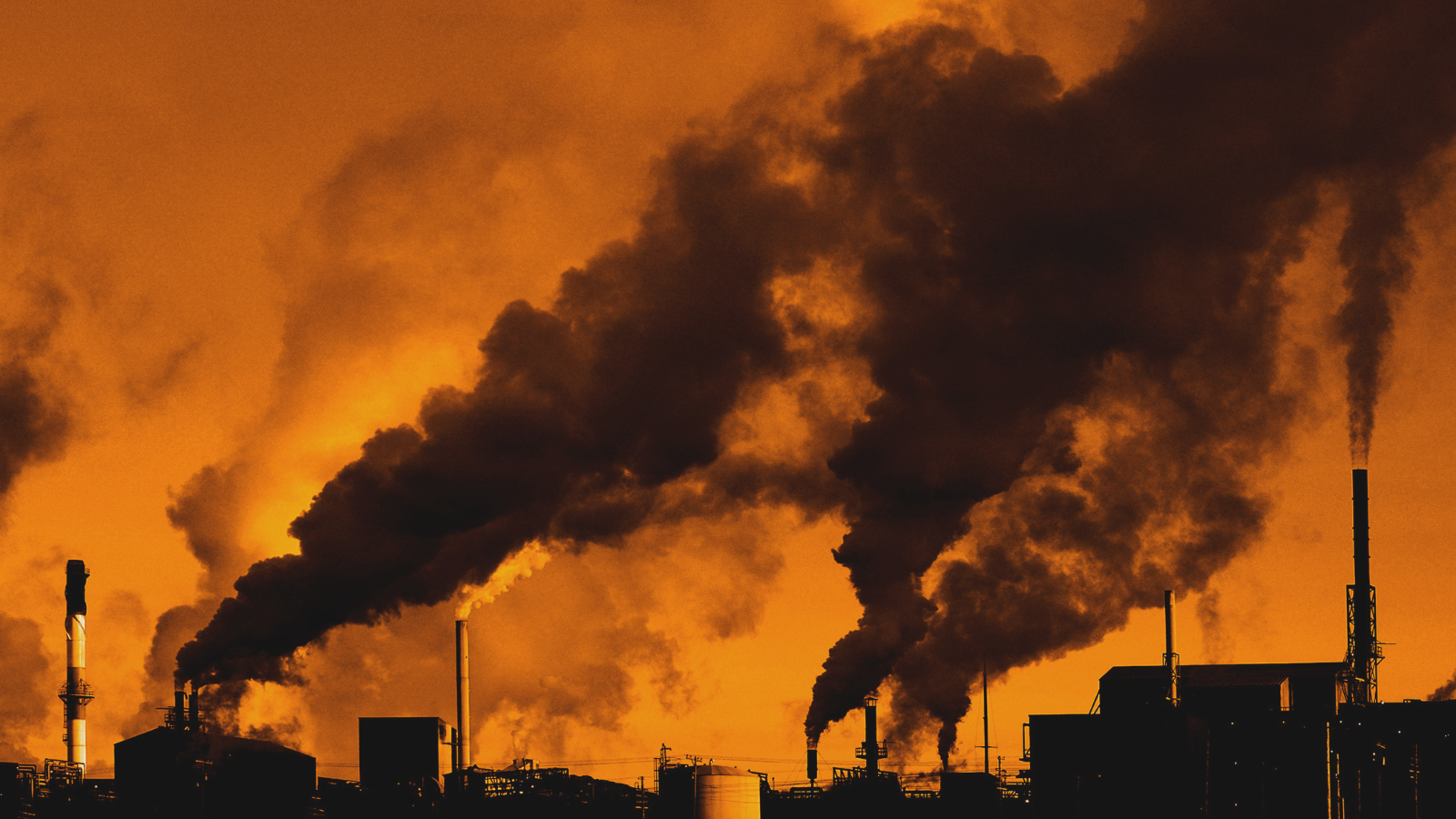Clever marketing promotes incineration as an efficient, green, and even “zero waste” approach to energy and trash. We can make our waste “disappear” and produce energy at the same time – who wouldn’t want that?
So why has the EU banned new incinerators? And why do we believe that it has no place in the world of zero waste?
What exactly is incineration?
The term ‘incineration’ covers processes that burn waste, with or without oxygen, usually to produce electricity, heat or fuel. It includes things like waste-to-energy, chemical recycling, pyrolysis and plastic-to-fuel. Each process treats the trash slightly differently, but their impacts are similar. So, as we dive in and examine three bogus claims made about incineration, we’ll group them all together.
Myth 1: Incineration is an efficient way to deal with waste
Incinerators are sold as big energy generators for cities, but the reality is they are hugely inefficient. Their fuel – municipal waste – is rarely sorted. This means it contains a lot of food, which has a high water content, making it hard to burn. Of the fuel put in, often less than 20% can be recovered as energy. This number would be even lower in the Global South, where municipal waste typically contains higher levels of organics. In comparison, coal power has a 35% efficiency rate and natural gas 42%.
This means a typical incinerator can only cover about 5% of a city’s energy needs. Let’s look at this at a household level. The average family (depending on where you live) produces 2.98 tonnes of waste per year. On average, burning 1 tonne of waste will produce 160 kwH of electricity, which can power a house for ten days. So the trash from one household in a whole year can power their house for less than a month.
In addition, incineration plants are neither cheap to build, nor to run. They require expensive specialised equipment such as pollution control systems, air quality monitoring, wastewater management and waste disposal systems. These add up: incineration costs $190-$1200 per tonne, compared to landfills costing $5-$50 per tonne. The low efficiency of incineration makes it hard to generate revenue from selling energy and balance the high set-up and operational costs. Consequently, seeing any return on investment can take 20 – 30 years.

Myth 2: Incineration is an environmentally friendly, renewable energy source
Incineration produces more greenhouse gas emissions than any other means of energy production. And of all the ways to manage plastic waste, it has the biggest climate impact. Burning one tonne of plastic for energy recovery will result in a net emission of 0.9 tonnes of CO2, even after offsetting the virgin fossil fuel that was saved in the process. This is compared with 60kg of CO2 for landfilling the same amount.
Incinerators are also a major source of fine particulates, heavy metals and persistent organic pollutants. As such, they should be equipped with expensive air pollution control systems, and often are in the Global North. These systems work by reducing the toxins in the exhaust gas and concentrating them into other byproducts like fly ash, slag and wastewater. These residuals are hazardous but are often still used in building materials or disposed of in landfills. Inevitably they will find their way into the environment, eventually entering the food chain. In the Global South, more lenient regulation and lower budgets mean even basic air pollution controls and safe disposal of byproducts are often skipped.
Exposure to dioxins, furans and other toxins leads to serious health issues. Studies in communities living near waste incinerators reveal a significantly increased rate of certain cancers, respiratory and neurological diseases, stomach ailments, fatigue, risk of miscarriages, birth defects and premature births. Disproportionately, it is marginalised communities that are exposed to such pollution. In the US, 8/10 incinerators are close to low-income communities or communities of colour. As the EU has stopped investing in new incineration plants, there has been a push to set up more in the Global South. This means that even more vulnerable communities are being exposed to harmful toxins.
Finally, incineration is often touted as “renewable energy”, as waste is constantly produced. However, the calorific part of waste is largely made up of non-renewable fossil fuel materials, such as plastic, that cannot then be reused. And, when the calorific percentage is low – in cases where there is a lot of organic material mixed in – incineration facilities often end up supplementing with virgin fossil fuels to keep the fire burning. This happens in China, where they depend on coal to keep their incinerators going.

Myth 3: Incineration is “zero waste”
The definition of zero waste centres around the conservation of natural resources, by designing and managing products and processes to systematically avoid and eliminate the volume and toxicity of waste.
Incineration is the opposite of this. By using waste as fuel, resources are destroyed, including materials such as metal or glass, which are reusable, or organic materials that could create compost.
Its high investment cost and the need to keep the fire burning around the clock means it relies on the continuous production of waste, especially fossil fuel-based plastic. The volume of waste produced can actually increase in a situation where an incinerator is present.
For example, Denmark predominantly manages its waste through incineration. They currently produce the highest levels of waste per person per year in the EU: 845kgs! This is far more than the average, which is 505kgs. Once an incinerator is built, it creates a lock-in effect, which means there is no incentive to reduce waste at all.
Incinerating rubbish also removes any incentive to sort and recycle it, because doing so reduces the amount available to burn. In 2019, a policy came into force in Shanghai, China to separate organics and recyclables from municipal waste. This resulted in 54% of waste being diverted from disposal, compared to 21% prior to implementation. The unforeseen consequence was that there was not enough waste for their incinerators to run. In May 2023, there were 88 days of closures across the city’s 12 plants, due to a lack of fuel.
One other positive aspect of zero waste is that it supports employment in the waste management sector – sorting, composting, recycling – as well as additional jobs around reuse, refill and repair. Incineration takes all of these livelihoods away. The jobs it creates are far fewer and carry a higher risk of toxic exposure.

So when you see any industry-sponsored promotion of incineration as “efficient”, “renewable” or “clean and green”, you can now call this out as greenwashing.
Instead of destroying resources, heating the climate and creating unsafe communities, local and national governments must help implement systems supporting zero waste. This will lead to more jobs, less emissions and healthier people! Do you agree? Then, share this blog post with anyone who thinks incineration could benefit their community.
Want to bust more myths? Check out our blog post that exposes the truth about plastic credits.


1 comment
Join the conversationAkram kaweesa - 07/10/2025
Am here to learn